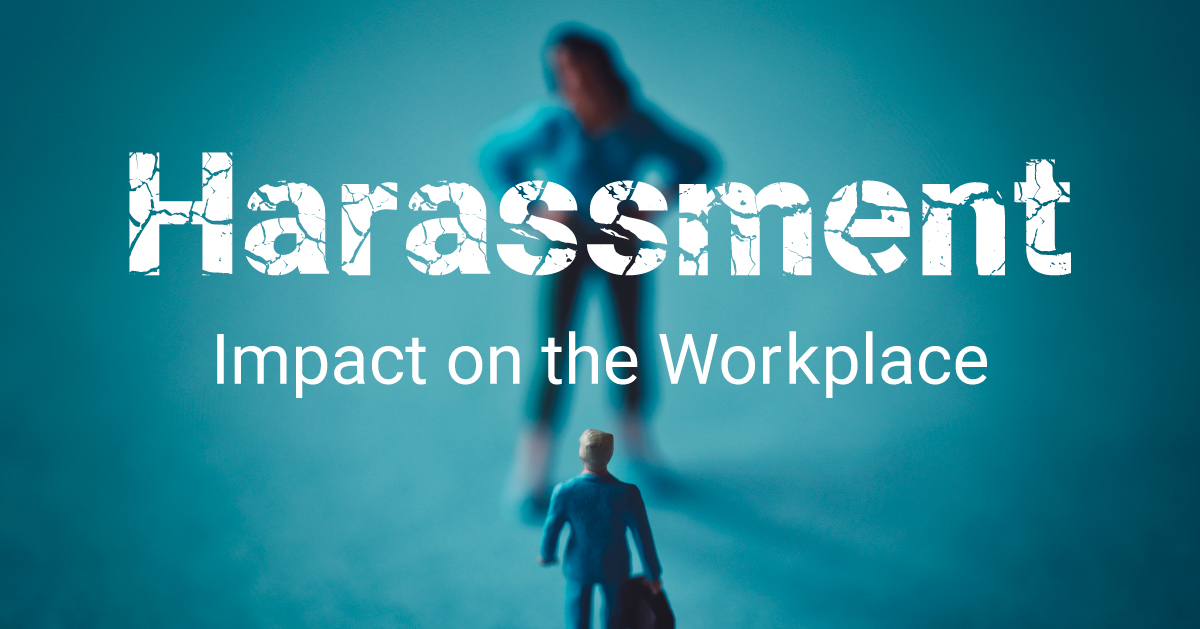If you telework, beware! What is Remote Harassment? What it is and how to deal with it

In recent years, problems caused by harassment have been on the rise, and in June 2020, the "Comprehensive Labor Policy Promotion Law (commonly known as the Power Harassment Prevention Law)" was enacted for large companies as a measure to protect workers. In April 2022, small and medium-sized enterprises will also be obligated to take preventive measures.
Although there are no penalties under this law, you can be held liable for compensation, and harassing behavior is a much more familiar problem than you might think. In this issue, we will discuss remote harassment in particular, explaining specific cases, the background behind their occurrence, and what can be done to prevent them in an easy-to-understand manner. We hope you will find it useful.
Contents
- 02Examples of possible cases of remote harassment
- Power harassment elements
- sexual harassment elements
- morally harassing elements
What is Remote Harassment?

As the name suggests, remote harassment is a form of harassment that has begun to be viewed as a problem in recent years. Remote work, which had not been widespread before, rapidly became commonplace as a measure to prevent the spread of the new coronavirus.
The ability to choose telecommuting as a way of working is a great benefit to employees. In addition to preventing infectious diseases, many employees may find it reduces the burden of commuting, balances work with nursing care and childcare, and improves their motivation to work.
On the other hand, however, some disadvantages can be found. These include the difficulty of communication among employees and the fact that the criteria for personnel evaluation are not yet clear.
The act of harassment caused by these disadvantages is remote harassment, also known as "remoharassment.
Identify specifically what conduct constitutes remote harassment.
Examples of possible cases of remote harassment

Remote harassment can be divided into three main types. Let's review each of them in detail.
Power harassment elements
In telecommuting, supervisors cannot see and confirm their subordinates' work. Remote harassment, which has a power harassment element, tends to develop from this insecurity.
- Require the webcam and microphone to be on at all times
- Excessively demanding business reports.
- Giving work orders even though work hours are over.
- Not allowing overtime requests.
sexual harassment elements
In a remote environment, you may see a private side of your coworkers, supervisors, or subordinates that you did not know before. A casual remark made in such an environment may constitute harassment. Even if the person who said it did not mean to, if the other person feels discomfort or disgust, it is remote harassment.
The following cases can be considered remote harassment with sexual harassment elements.
- Point out things like clothing, body shape, makeup, etc.
- Asking for off-the-job contact
- persistently invite them to an online drinking party
- Persistently ask about family members and other people living with you.
- Seek individual connections on social networking sites
morally harassing elements
Excessive intervention in one's private life that is completely unrelated to one's work is an act of harassment.
The following cases are remote harassment with a morally harassing element.
- Mention private spaces such as room layouts and furniture.
- Reprimanding pets, children's voices entering, etc.
- High-pressure and intimidating behavior toward subordinates in web conferences, etc.
Why does remote harassment occur?

Why does this type of remote harassment occur? Remote harassment is harassment induced by situations unique to remote work. There are two main reasons for acts of harassment that occur in remote environments.
Reason 1: Difficult to switch between home and work
Remote work, which connects to the workplace online from home, is difficult to switch on and off, and it is easy to mix public and private life.
In addition, I often catch a glimpse of my subordinate's private life, etc., at a moment's notice while working remotely, and often mistakenly believe that I have become "close" to him.
When the line between work and private life is not clearly delineated in remote work and communication is conducted with a misjudged sense of distance, there have been cases of harassment.
Reason 2: I don't know how to manage my subordinates.
In a remote environment, it is difficult to keep track of subordinates' activities and work progress, and many people are concerned that they may be slacking off.
As a result, they may ask subordinates to report excessively or contact them outside of work hours.
If this behavior goes too far, the subordinate will feel a great deal of stress, which can lead to acts of harassment.
What Companies and Employees Should Do to Prevent Remote Harassment

So what can be done to prevent remote harassment? Let's review both the company and employee sides of the equation.
corporate side
Increase employee knowledge of harassment
Education for all employees is important to prevent harassment in general, including remote harassment. Instilling awareness among all employees of what constitutes harassment will help curb remote harassment.
Choose a method that is appropriate for your company, such as training, e-learning, or poster display.
Create firm internal rules for remote work.
Both supervisors and subordinates often feel uneasy under unfamiliar remote working conditions. To eliminate this uneasiness, create firm internal rules.
For example, make sure you have a solid framework for teleworking in your company, with rules that are as specific as possible regarding the appropriate method and frequency of checking on the progress of work and how to communicate with each other online.
In addition, management for office work and management for remote work should be considered different. Create new criteria for personnel evaluation appropriate for remote work.
Establish a harassment consultation service
It is also effective to set up an internal consultation service regarding harassment. The consultation service can be a safe place not only for employees who may have been subjected to remote harassment, but also for those who may have engaged in remote harassment.
In such a case, the HR representative who receives the consultation should try to confirm the facts in a calm and objective manner. If it is difficult to set up an appropriate contact person within the company and there is no cooperative system in place, one suggestion would be to rely on an outside specialized contact person.
Employee side
make oneself presentable
Even if you are working remotely, do not work in loungewear and no makeup. At the very least, wear clothes and makeup that are ready to go out right now and take care not to show your private side. Turning off the camera is also an option if you are unable to do so.
Set a virtual background
In the case of web conferencing, for example, set up a virtual background so that private parts of the meeting are not shown. This will prevent people from prying into your private life. If a virtual background is not possible, make sure that laundry, bedding, and other items that give the impression of daily life are not seen by the camera.
Back to ContentsSummary
Harassment is something that is likely to be done unconsciously. Although teleworking has spread quickly throughout society, it is still in its infancy, and the remote harassment that occurs in this context requires attention.
The key to preventing the occurrence of remote harassment is to have the correct knowledge. Now that small and medium-sized companies are required to take measures to prevent power harassment, it is imperative to provide employees with the opportunity to acquire the correct knowledge. Why not take this opportunity to consider training on harassment?
For in-house elearning courses, learningBOX will help you effectively.
learningBOX is a cloud-based elearning platform
and you can easily build training courses online.
Created content will be delivered to employees and you can track their learning progress.
There will be something you can do to improve your work environment.
▼You may also like:
Back to Contents


-
Discover rich featuresService Guide
-
Feel free to contact usGet in Touch
-
Try our Free PlanTry Free Plan










